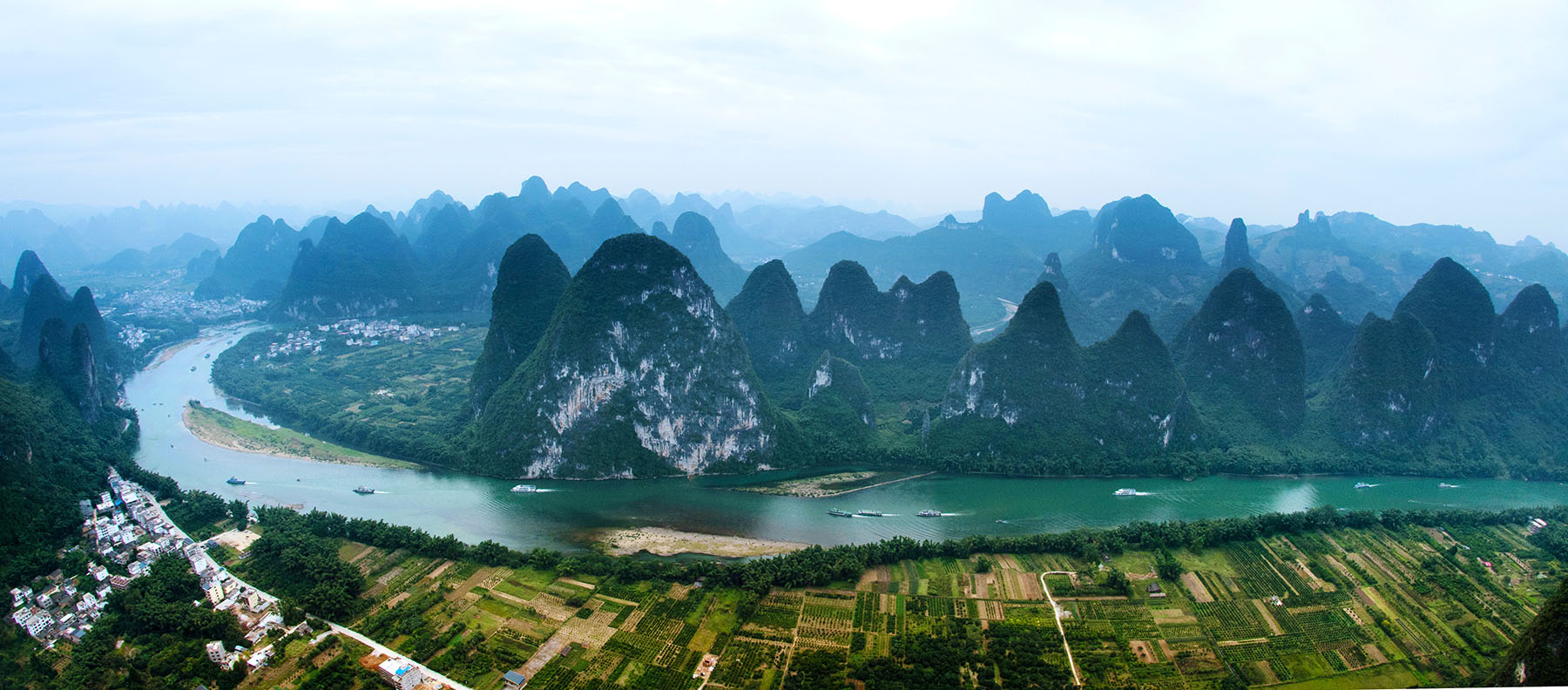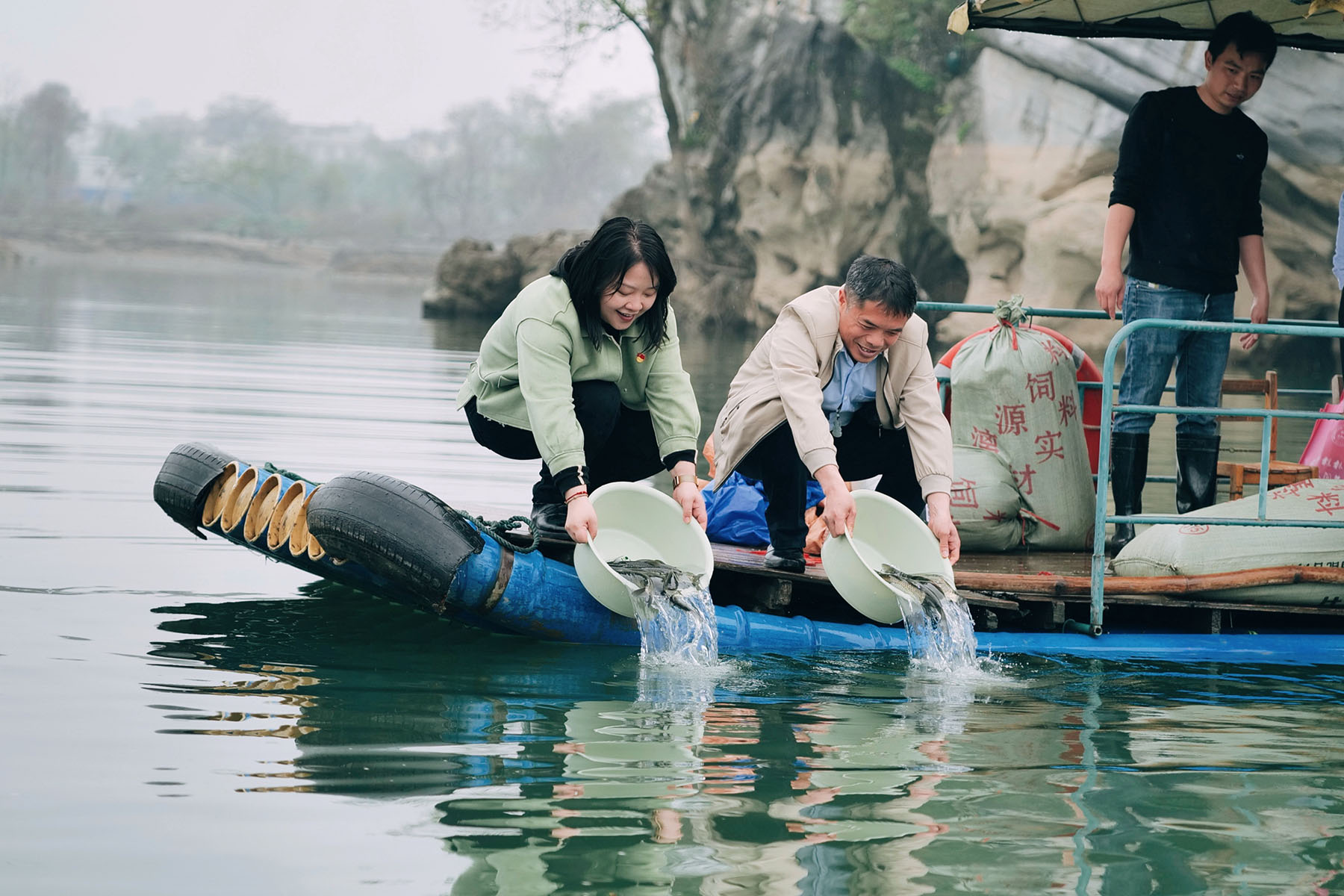Famous waterway reaps major green rewards with improved environment, biodiversity offering global sustainable development model

Editor's note: As protection of the planet's flora, fauna and resources becomes increasingly important, China Daily is publishing a series of stories to illustrate the country's commitment to safeguarding the natural world.
Villager Pan Jinsheng remembers how he would trudge up the mountain slopes surrounding his home more than a decade ago, cutting down thickets of wild bamboo to sell.
"We had to rely on nature for our survival, but we also knew depleting the forest in this way wasn't sustainable," said Pan, 54.
In 2011, he turned to eco-tourism by offering food and lodging to an increasing number of visitors to the area.
"We continue to rely on these mountains and valleys, but this time, our lives are improving together with the environment," Pan said.
His view reflects a growing local awareness among his neighbors of protecting their pristine home to reap the green rewards of sustainable development, which is especially significant as his village sits at the foot of Mao'er Mountain. The highland is the source of the Lijiang River winding through Guilin, a tourism hub in the Guangxi Zhuang autonomous region.
The iconic waterway, flowing more than 160 kilometers amid Guilin's picturesque karst landscape, is featured on the 20-yuan note of the Chinese renminbi.
READ MORE: Mayor to build Guilin into ideal tourist city
The latest efforts by the public and private sectors to preserve and protect the major river and its flora and fauna are seeing record achievements — ranging from the quality of water originating at its mist-covered mountainous source to fish and other aquatic life thriving downstream in Guilin's urban area — altogether presenting a global model of growth in harmony with nature.
During his inspection of the Lijiang in the city in April 2021, President Xi Jinping, who is also general secretary of the Communist Party of China Central Committee, hailed the waterway as one of a kind and highlighted the protection of its environment.
More than 5 billion yuan ($703.5 million) has been earmarked for a three-year Lijiang ecological restoration project, including the cleanup of sand mining sites, stone quarries and waste discharge. Guilin also designated April 25 as Lijiang River Protection Day to improve local residents' environmental awareness.
In recent years, the city has implemented more than 30 major projects in the Lijiang River Basin, including integrated protection and restoration efforts that cover mountains, rivers, forests and lakes, according to authorities. At least 10 tributaries of the river have been placed under centralized pollution control, with sewage treatment facilities set up in towns along its banks.
In April this year, regional and city authorities released the latest findings of a Lijiang ecological environment quality report, which showed water, air and biodiversity quality steadily reaching top levels and pollutant concentrations at record lows.
At Mao'er Mountain, Zheng Yongming regularly leads a team of nine patrollers on foot, reaching altitudes of more than 1,800 meters to look for any activity that may harm the national nature reserve.
"The waters here feed the Lijiang, so we must watch over them," Zheng said.
"Biodiversity has markedly improved with the growing green awareness of residents and visitors. It's common to come across wildlife such as black bears and monkeys, and there have been no cases of forest fires in recent years."
The reserve now has at least 13 conservation stations under its comprehensive ecological protection system, helping it attain a forest coverage rate of about 99 percent to provide for over 6,600 species of flora and fauna.
National-level protected animals, including the clouded leopard, dwarf musk deer and Chinese giant salamander, are thriving in the area, where thousand-year-old southern Chinese hemlocks rise above oxygen-rich alpine wetlands with over 2,400 vascular plant species capping the lush highlands.
Guilin Mayor Li Chu said the protection and restoration of the Lijiang and its surroundings remain a top priority.
The city is a pioneer in reporting its environmental quality and tracking the river's green development with its quality index, as well as in implementing local environmental protection regulations focused on the waterway and the area's karst landscape, Li said.
The Lijiang has since been lauded as a sustainability model at the national level, he said, adding that Guilin is now working toward global recognition of its green achievements — most notably the United Nations Champions of the Earth award, the top UN environmental accolade.
"With development and global vision, we will protect world-class landscapes so that this beautiful place will last forever," he said.
Home advantage
Zhang Xiaoyang, director of Guilin's environmental protection bureau, said that over the past decade, more than 200,000 hectares of afforestation area have been rolled out in the Lijiang River Basin, helping to stem soil erosion in over 140,000 hectares of land.
Moreover, more than 99 percent of Guilin's urban sewage has undergone centralized treatment, a significant achievement that has won the city national honors, Zhang said.
"We are gradually forming a world-class, ecological protection 'Lijiang River model' in which man and nature coexist in harmony. In terms of the protection of the river, we have two magic weapons: one is the nature-based management method, through which we will make every effort to maintain the authenticity and completeness of the Lijiang River. The second is to realize the protection and sustainable development of the river through inclusive growth," Zhang said.
"Guilin has built an integrated protection and governance system for the entire river basin by combining nature-based solutions with traditional engineering measures for vegetation restoration.
"We should work together to promote a green model, with the integrated development of eco-tourism and rural vitalization, covering the towns and villages along the river with its scientific protection."
Eminent hydrogeologist and environmental geologist Lu Yaoru, who has studied Guilin's karst landscape and its related water features extensively, said the city has made outstanding achievements in biodiversity conservation and the sustainable development of the Lijiang River.
Guilin can fully leverage its abundant natural resources to develop agriculture, biomedicine and other green sectors, integrating the health and tourism industries to build a sustainable, world-class tourism city.
Strengthening the introduction and cultivation of ecological and environmental research talent is also important, said Lu, who sits on several national and international expert committees focusing on development and the environment.
"Guilin has a number of scientific research institutes and universities that have set up research projects in environmental and geosciences, but it is still necessary to introduce international and domestic innovative talent in related research, especially in interdisciplinary fields through international cooperation and exchanges," Lu said.
"Over the years, Guilin has attached great importance to accelerating its green and low-carbon transformation by supporting the development of green industries," he said.

Innovative action
Leading the green charge in Guilin's business sector is textile and apparel giant Esquel Group, which has a major facility in the city focused on sustainable development. The company has introduced "an eco-wash process that uses just 4 percent of the water needed to wash a typical garment, eliminating wastewater entirely", said Teresa Yang, the company's vice-chairperson.
"In 2021, we announced our pledge to achieve carbon neutrality. Integral, our sustainable development garden in Guilin, showcases how a traditional industry can transform its operations to become a more sustainable business model. We have managed to achieve zero discharge and earn major awards such as the LEED certification," said Yang, referring to the global green building rating system.
The group is also developing innovative technologies such as waterless dyeing and salt recovery.
By investing in cutting-edge sustainable technology, it is showcasing its commitment to protecting precious natural resources such as the Lijiang River, she said.
Another major part of the innovation and technological drive powering Lijiang protection and development efforts includes a state-of-the-art, comprehensive 5G digitally integrated ecological protection and utilization platform.
Rolled out with a total investment of 316 million yuan, the project includes 19 water quality monitoring stations in the area's main channels and tributaries to carry out real-time tracking of water quality and supervision of illegal sewage discharge and floating debris, with an early warning system to automatically detect substandard water quality and other conditions.
The network also covers 213 high-definition video surveillance installations and more than 1,900 mobile surveillance cameras to monitor key docks, watersheds and related venues in real time, with an intelligent analysis system deployed to detect illegal construction and garbage disposal, according to the platform's operator.
The intelligent monitoring system can also detect exhaust from cruise vessels and provide timely warnings, and a biodiversity monitoring function conducts real-time surveys of protected wildlife, collecting data on the types of rare species and how often they appear.
A "comprehensive law enforcement smart service" feature completes the emergency rescue early warning capabilities, including first-aid facilities set up in scenic spots.
ALSO READ: Guilin makes greater strides in modernization
The platform allows for full coordination with the public security bureau and related agencies under an intelligent law enforcement system that combines drones and 5G communications equipment, said Liu Huanmei, deputy director of the Lijiang River management committee.
"This technology raises the efficiency and response time needed to protect the river and its surroundings," Liu said.
"It also takes into account the needs of the community and gives residents a personal stake in the waterway by including them in the early warning and monitoring systems."
Further downstream, many Guilin residents are already playing their part to keep their river clean and flowing smoothly. For diving instructor Tang Junwen, that means rallying more than 200 of his trainees, dive club members and volunteers to take part in a grassroots underwater garbage pickup project.
Since 2022, more than 1.5 metric tons of underwater trash such as glass shards, cans and plastic products have been retrieved from the waterway, said Tang, 46.
"This gives people a personal responsibility to take care of the river, and it's paying off," Tang said. "We can see for ourselves that biodiversity is improving around and under the water, even as the amount of trash is dropping.
"We also hope to inspire more people through our actions to keep our beloved Lijiang beautiful."
Contact the writers at alexishooi@chinadaily.com.cn


